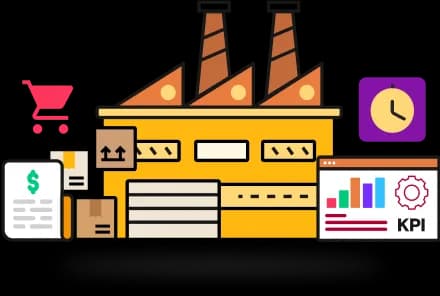Industry
Industrial Manufacturing
High Tech & Electronics
Footwear Manufacturing
Apparel & Textiles
Food & Beverage
Rubber & Plastics
Metal Fabrication
Industrial Machinery & Equipment
Construction & Engineering
Furnitures & Fixtures
Medical Device Manufacturing
Automotive Manufacturing
Aerospace And Defence
Screw Shop Manufacturing
Spring Shop Manufacturing
Solutions
Pricing
Resources
Company
GST Legacy
How is GST different from the Current Tax Structure?
Recently, the Rajya Sabha has unanimously passed The Constitution (122nd Amendment) (GST) Bill, 2014. The bill has already been passed by the upper house unanimously giving nod to all the amendments proposed by Rajya Sabha. With this, the path to the rollout of the biggest reform in indirect tax reform–Goods and Services Tax (GST) is clear. The bill is slated to go to different states (15 out of total 29) for their approval since it is constitutional amendment bill that has proposed changes in the structure of fiscal federalism. Unarguably, industry experts and government official consider the new proposed structure on a unified indirect tax regime to closely espouse the concept of ‘One Nation, One Tax’. To understand the impact of the bill across industries after it is made into law, it becomes necessary the differences with the current tax structure with respect to structure of GST and the ways various tax components will operate across transactions of goods and services.
The Need for GST
A strong rationale exists for the need for the GST. Since the mid of 1980, various indirect tax reforms have taken place, albeit in a piecemeal manner. The reforms have greatly altered the taxation system of the nation and has helped in eliminating the cascading effect of tax-on-tax. However, the introduction of new taxes have been only partly successful.
Value-added taxation in the country was introduced in 2005, and replaced sales taxes and covered across transactions and sale of goods up to the retail stage. VAT ensured that every person in the transaction chain gets credit of all the taxes paid on previous purchases. However, this did not entirely eliminate the cascading effect of taxes.Read India’s Current Tax Structure to know more about the need for GST.
Following reasons account for the shortfall:
The credit of Input VAT can be availed against Output VAT while the credit of input excise tax can be availed against output excise tax. However, the credit of VAT is not available against excise and vice versa. Since, VAT includes excise tax, the problem of cascading effect of tax-on-tax still remains.
At the central level, Central Value Added Tax or CENVAT was introduced CENVAT credit in which credit of tax is paid on inputs and capital goods only up to the manufacturing stage; it does not extend to the distribution chain.
To top it all, it is not feasible to truly implement VAT since all goods and services are not taxed at the same rate across the country.
Since GST eliminates all this discrepancy by making no distinction between goods and services; this implies that with GST to come into effect soon, tax evasion will not be possible by selling goods as services and gaining undue tax benefit. In addition, GST ensures that all the transactions will be taxed at the same rate in the country. Furthermore, as will be seen shortly, the new framework will subsume almost all the indirect taxes taxed by center and different states, which effectively eliminates plethora of taxes on goods and services. Read One Nation, One Tax.
How GST Ensures Value-Addition across the Chain
Consider a typical scenario of the manufacturing of a product X. GST ensures that there is value addition across every chain from manufacturing stage till it reaches the end user.
Manufacturer
The manufacturer spends a total of Rs 100 on various raw materials, which is inclusive of the taxes of say Rs 10 he has paid. After X is manufactured, there is a value addition, of say Rs 40, making the gross value of the product to be Rs 140. If the tax charged at the good X is 10%, the tax on the output of the good will be Rs 14.
GST vs non-GST
In the GST regime, the manufacturer can offset the tax of Rs 14 with the tax of Rs 10 already paid on raw materials. Hence, he only pays Rs 4 (14-10). In non-GST regime, since there is no offsetting of taxes, the good is sold to the wholesaler at Rs 154 (140+14).
Wholesaler
The next stage is when X moves from manufacturer to the wholesaler and he purchases X is for Rs140. He adds value to X of say Rs 30; this amount basically constitutes the profit margin. The gross value of X now becomes Rs 170 (140+30). The total tax at 10% now equals Rs 17.
GST vs non-GST
The tax chargeable at 10% at the current tax regime amounts to Rs 17. However, as proposed by GST, this tax on the output can be offset by the tax of Rs 14 he paid while purchasing the good from the manufacturer. So the effective tax incidence is Rs 3(17-14). In non-GST regime, the wholesaler adds the value of Rs 30 to the price he paid to the manufacturer, i.e., the price now becomes Rs 184 (154+30). To this he adds a tax of 10%, the price now becomes Rs 202.40 (184+18.40).
Retailer
In the final stage when the product X reaches the retailer. The retailer adds a margin of Rs 20 and the final price of X now amounts to Rs 190 (170+20). The tax of 10% on the gross amount now equals Rs 19.
GST vs non-GST
In the proposed GST regime, this tax amount can be set off against the purchase from the wholesaler, i.e, Rs 17. The retailer brings down the effective GST incidence on himself to just Re 2 (Rs 19-17). In non-GST regime, the retailer buys X at Rs 202.40 and adds a margin of Rs 20 to that. The price now becomes Rs 222.40. To that he adds a tax of 10%, so the final price of the product becomes approximately Rs 224.40 (222.40+2.22).
Total Tax Incidence
In non-GST regime, the total tax incidence is Rs 34.62 (14.00+18.40+2.22). Whereas in GST regime, the total tax incidence on the value addition across the chain from the input suppliers of raw materials to the final retailers is Rs 23(14+4+3+2). Hence the tax reduces to Rs 12.62 (34.62-22.00)
End user:
In GST regime, the final price of X now becomes Rs193, the price at which the customer buys X, which includes a tax of Rs 23. In the current non-GST regime, the customer pays 224.40 which includes a tax of Rs 34.62.
The aforementioned scenarios suggest that manufactures can claim the credit of input taxes paid on each stage of value addition and government has sufficient provisions under the GST law to make this hassle-free. A large number of manufacturers rely on ERP and MRP solutions that can account for these changes in tax calculation. Deskera, a leading provider of business software offers ERP solution that are equipped with all the required functionalities to make the GST calculation accurate and easier for traders, dealers and sellers. The degree of adaptability of ERP solutions to GST is what will define the core competencies of market leaders in enterprise software providers across India.
The Verdict
GST subsumes miscellaneous central and state taxes and will be implemented in the form of dual GST—the central GST (CGST) levied by Centre and State GST (SGST) levied by state. In addition, the component Integrated GST (IGST) is levied by central government on various inter-state supply of goods and services. As per the newly proposed regime, there is a value addition across stages and the cascading effect of tax-on-tax is done away with this. There are taxes only on value addition at each stage, with the benefit of setting off the taxes against the central or state GST paid on each consecutive purchase. Thus, the new regime ensures a continuous mechanism of tax credit and a unified tax structure benefitting manufacturers, retailers and end consumers.
Get Started with Deskera
Benefits of cloud business software
- Productivity
- Implementation
- Mobility
- Scalability
- Security
See related articles about India GST
What our Customers Say About Us
Whatever your business
size, Deskera enables you to
simplify operations across
business functions. Here's
what our customers say
about us.


At GoDo, we understand that managing our finances and customer relationships is essential for our success. Deskera has provided us with an easy to use and intuitive platform that has enabled us to access our financial data, track customer relationships, and manage our finances with ease. We have been able to streamline our processes, better manage our finances, and stay on top of our customer relationships. We highly recommend Deskera to any business that is looking to stay organized and efficient.
Wesley Wright
CEO, GoDo Life


We are extremely pleased with our decision to switch to Deskera and have seen a significant improvement in our business operations since making the switch. The sales process was smooth from start to finish and customer support at every step of the implementation was stellar. Highly recommend Deskera to those looking for a great ERP solution.
Wally Mears
CEO, The Jungle

We implemented Deskera's integrated platform to improve our procurement and inventory management processes to streamline our operations and improve efficiencies. I highly recommend their platform to any company looking to accelerate their growth.
Scott Phetsalod
Laboratory Manager
Run Your Business With Deskera

Products
Use Cases
 , India
, India  , Singapore
, Singapore  , and Canada
, and Canada  with
with 


